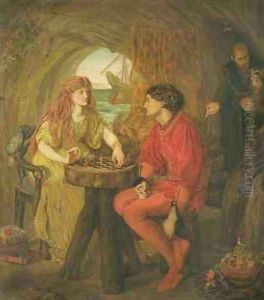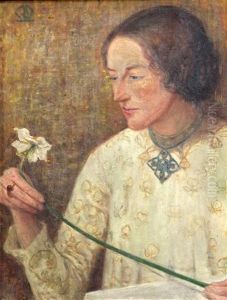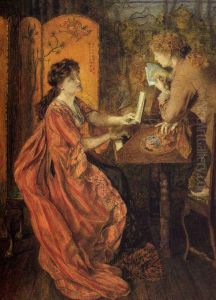Lucy Madox Brown Paintings
Lucy Madox Brown was an English painter associated with the Pre-Raphaelite Brotherhood, an artistic movement that aimed to reform art by rejecting what its members saw as the mechanistic approach first adopted by Mannerist artists who succeeded Raphael and Michelangelo. Born on July 19, 1843, in Paris, France, Lucy was the daughter of Ford Madox Brown, a painter who was closely linked to the Pre-Raphaelites, though he was never an official member of the brotherhood. Her upbringing in an artistic environment deeply influenced her career and style.
Lucy showed artistic promise from a young age and received her training from her father. Under his tutelage, she learned to appreciate the Pre-Raphaelite ideal of fidelity to nature and developed a keen eye for detail, color, and composition. Her work often featured medieval and literary themes, which were common among the Pre-Raphaelites, and she was known for her portraiture and her representation of women, which conveyed a sense of their inner lives and emotions.
In 1874, Lucy married William Michael Rossetti, the brother of Dante Gabriel Rossetti, a prominent Pre-Raphaelite artist. This marriage further cemented her place within the circle of artists and intellectuals of the time. She and her husband shared an interest in literature and art, and they were both involved in the cultural life of London.
Lucy Madox Brown's health was not robust, and she often struggled with illness, which affected her artistic production. Despite this, she continued to paint and exhibit her work. Her contributions to the art world were cut short when she died at the young age of 50. She passed away on April 12, 1894, leaving behind a legacy as a talented artist who worked to embody and extend the Pre-Raphaelite tradition in Victorian England. Her works, though not as widely known as some of her contemporaries, continue to be appreciated for their beauty, craftsmanship, and emotional depth.


